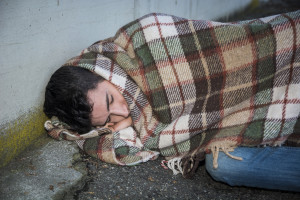
ST. GEORGE – Utah is known for its scenic wonders: Zion, Bryce Canyon, Arches and Canyonlands national parks, to name just a few. But the state is also known as one of the healthiest states in the union, ranking in the Top 10 for decades. 2015 was no different, according to a recently released report by America’s Health Rankings, a publication of the United Health Foundation. According to the report, Utah ranked No. 7 in the nation.
Despite the high ranking, there were some less-than-positive trends. Overall, Utah dropped two positions from its fifth-place ranking given by the United Health Foundation in 2014.
Negative trends
- Utah has a high rate of adolescents who have not been immunized
- Utah lacks enough primary care physicians
- Utah drug-related deaths increased 19 percent (Utah ranks 46th out of 50 for drug deaths in the U.S.)
- Utah’s low birth weight has been increasing steadily for two decades, increasing from 5.6 to 7 percent of all live births
- Utah comes in 27th for air pollution
- Utah has a very high rate of suicide, ranking 47th in the nation
Positive trends
Despite some of the grimmer statistics and need for improvements, the United Health Foundation’s report indicates much to celebrate when it comes to the health of Utahns.
- Utah has the lowest percentage of tobacco smokers in the United States
- Utah has the fewest diabetes cases and lowest cancer death rates
- Utah is No. 1 for overall positive health behaviors; that is, it ranks low in excessive drinking, smoking, obesity and physical inactivity
- Utah ranks high in high school graduation –those high school students who graduate within four years of starting ninth grade with a regular high school diploma – although that ranking is at No. 25, the weakest ranking among the health behaviors factored
- Utah is the third best state for income disparity; (according to the report, “Income disparity, or the Gini coefficient, is a common measure of income inequality. It varies between 0, which reflects complete equality of income, and 1, which indicates complete inequality (one person has all the income or consumption, all others have none.” Read more here.)
- Utah has the fewest heart attacks, cases of high blood pressure and cholesterol and the second-lowest number of strokes in the nation
- Utah has the second-lowest number of preventable hospitalizations
The United Health Foundation gathers its data from a variety of secondary sources – the U.S. Health and Human Services, Commerce, Education, Justice and Labor departments; Environmental Protection Agency; American Dental Association and many others. Using the numbers and statistics provided, the United Health Foundation creates a formula using standard deviation.

Dr. Laurine Tibaldi, who works for United Healthcare as the market medical director for Utah, said the state generally does very well on a long-term basis, specifically pointing out the best-in-the-country levels of nonsmokers, diabetes cases and cancer deaths.
“Since 2013, (smoking) has dropped 10.6 percent,” Tibaldi said. “Only 7.1 percent of residents are found to have diabetes. That’s really an excellent marker.”
Obesity and physical inactivity were other areas in which Utah does well, Tibaldi said.
“That means more of the residents are active and there’s not a lot of obesity,” she said.
Tibaldi acknowledged that there are areas of concern for Utah.
“We really need to focus on a few things,” she said. “One of the things is an overall low immunization rate among adolescents. Another area to improve upon is the rate of drug deaths. That can include both prescription drug abuse and illegal drugs. The third major challenge is limited availability of primary care physicians.”
Washington County
Breaking it down even further, Washington County ranks seventh out of 27 counties ranked in Utah, according to an annual report published by County Health Rankings and Roadmaps (a collaboration between the Robert Wood Johnson Foundation and the University of Wisconsin Population Health Institute.) It ranks well in quality of life, fourth; and ranks well in healthy behaviors, sixth. For most other metrics, the county ranks between 12th and15th.
Overall rankings, localized
While the rankings are somewhat generic and broad, they are useful indicators of patterns in the state and the county, said Dave Heaton, public information officer for the Southwest Utah Public Health Department.
“The initial thing we say is: Keep on doing well what we’re doing,” he said. “We do enjoy a very low adult smoking rate. We kind of have the rural lifestyle down here; people tend to be more active, it’s an outdoor culture. The very environment encourages outdoor activity.”

Heaton said that while Washington County ranks lower (15th in physical environment) on the scale for county air pollution, that is due to dust and pollution that blows in from Nevada and California.
“Down here in southwestern Utah we have nowhere near the inversion of northern Utah,” he said. “Because of our natural environment and what we inherit from other states, we have some air pollution we can’t do much about.”
“As far as people maintaining a good life expectancy, maintaining good health, some of the big killers of people are … diabetes and heart disease,” Heaton said. “Really good prevention as far as lowering our rates are the same for both of those, and that is regular physical exercise, eating adequate amounts of fruits and vegetables, not smoking … and maintaining a healthy body weight.”
Heaton said that while Utah and Washington County have some of the best health factors in the nation, the state and county suffer from many of the same weak points as the rest of the United States. He said:
As far as the smoking category, we really shine there, but the others as far as exercise and fruits and vegetables we struggle kind of just along with the rest of the nation. The American diet is difficult to change on your own. I think … these indicators show that we’re actually getting a little worse with adult obesity. Only about 22 percent of us exercise on most days of the week for at least half an hour. Only about 17 percent of us are eating the adequate amount of fruits and vegetables.
One of the issues the Health Department faces when trying to improve the health of Southern Utah residents is the western attitude of independence and a resistance to governmental recommendations, even if those suggestions are beneficial, Heaton said.
“That’s an ongoing battle,” Heaton said. “Part of Southern Utah culture is a lot of people like to be independent, there’s a little bit of resistance to being told by the government or an official organization how you should live your life. If people use that independence to take responsibility for their own health, that’s great.”
Heaton said there are subtle differences in health between the five counties the health department covers in Southern Utah.
“The more rural you get, you see tobacco use bump up a little bit,” he said, “so we’re still lower than the nation; but you might find in Kane or Garfield or Beaver counties a little bit higher rate of tobacco use. That covers not only cigarettes but chew tobacco. It’s sometimes a cultural part of the cowboy-rancher lifestyle.”

Children in poverty
One of the more disturbing aspects of the state and county health rankings is children in poverty. Overall about 15 percent of the children in Utah are living in poverty, but in Washington County, that number jumps up to 21 percent. Statewide, in a single year, children living in poverty increased 30 points from 9.2 to 12 percent over the past year.
“Another thing that’s highlighted for Utah in the past year is the number of children in poverty increased,” Tibaldi said. “That’s definitely not the right direction.”
“Certainly the kids that are in poverty have more health problems than kids that are not,” Carol Holloway, executive director of Switchpoint Community Resource Center in St. George, said. “That number escalates even more if the kids are living in a homeless environment.”
Holloway said that children coming into Switchpoint are often ill with upper respiratory problems, mental health issues and nutrition deficiencies.
“They’re not eating regular, healthy meals,” Holloway said. “Instead it’s a lot of cheap fast food, dollar-menu stuff because that’s what you can afford. So you’re seeing an increase in diabetes in these children that are coming from homeless or extreme poverty families.”
There are close to 25,000 residents in Washington County who are living at or below the extreme poverty mark, Holloway said, explaining:
That number is indicative of why there’s so many children that are considered homeless in our county. So when you’re looking at 800 to 1,000 kids that are considered under the McKinney-Vento Act (legislation created as a federal response to homelessness, signed into law by President Ronald Reagan in 1987) as homeless, that number is alarming … how can we as a community fix some of those problems?
One answer Tibaldi gave to the negative factors of Utah’s health is open and honest communication.
“From a health care providers’ standpoint, I think awareness is the first step,” Tibaldi said, “discussing our problems out in the open; engaging various stakeholders from different state departments and agencies that potentially have the resources and could even work synergistically to tackle some of these issues.”
Resources
Email: [email protected]
Twitter: @STGnews
Copyright St. George News, SaintGeorgeUtah.com LLC, 2015, all rights reserved.